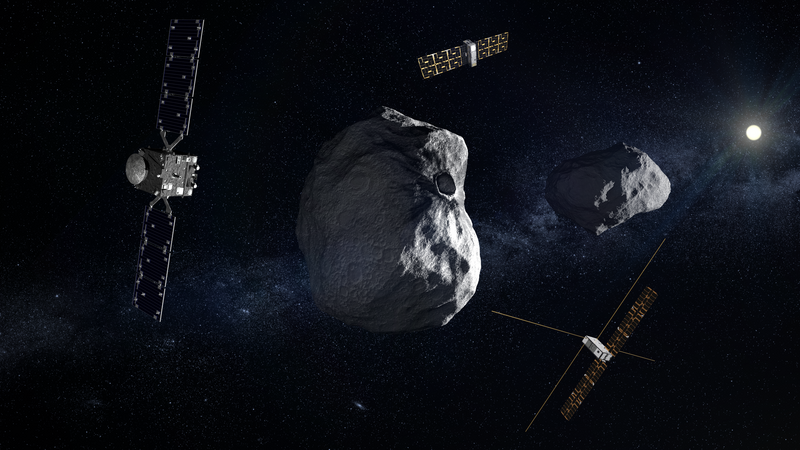Adriano Campo Bagatin, Rafael A. Alemañ, Paula G. Benavidez, Manuel Pérez-Molina, Dereck C. Richardson
Asteroids, the small rocky bodies in our solar system, exhibit a remarkable diversity of shapes. This variety ranges from nearly spherical objects to elongated ones, binary systems (a primary body orbited by a smaller one), and “contact binaries” such as (25143) Itokawa, the target of the Hayabusa mission (JAXA). Contact binaries, in particular, have a distinctive shape characterized by significant mass at their opposite ends, separated by a neck or constriction, resembling a giant peanut. These objects are thought to form through the slow collision of two previously independent bodies that eventually merge into a single entity.
Regardless of their shape, these small bodies spend most of their time within the Asteroid Belt, a region characterized by frequent collisions. Speculations about the origin of the diverse asteroid shapes often involve mechanisms such as collisions (which may group previously separate objects) and the effects of asteroid spin (which could cause parts of the body to break off).
Recent numerical simulations of the gravitational interaction between the components of multi-object systems (n-body systems) have been conducted to analyze the evolution of fragments resulting from catastrophic collisions (Campo Bagatin et al., 2018). This study introduces the idea that the stochastic process of gravitational reaccumulation of these fragments could be responsible for many of the observed asteroid shapes. Shape elongation—both for S-type (silicate-rich) and C-type (carbonaceous) asteroids—shows a tendency to increase with the growth of the initial volume of fragments set to reaccumulate.
Moreover, the conclusions presented in this article suggest that contact binaries could form regularly during the gravitational reaccumulation process following catastrophic impacts. Similar processes may have occurred in some comets and trans-Neptunian objects (those located beyond Neptune’s orbit).
